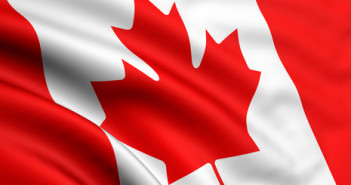The conclusion of last week was a frustrating one for those investors with portfolio’s positively correlated with an improvement in risk sentiment, as the S&P limped into the end of the week while concerns around China and low oil prices hung like a dark cloud over financial markets. The upcoming trading week is likely to be quieter from a data perspective, though each of the important market drivers will have releases sure to influence price action in the week ahead.
Over the weekend China released inflation statistics for the month of December that were roughly in-line with estimates, though consumer prices did tick up slightly heading into the end of the year. The year-over-year figure came in bang on estimates at an increase of 1.6% when compared to the previous twelve months, rising from the 1.5% that had been registered in November. The upward pressure on the consumer price index is not material enough to warrant concern around further monetary policy stimulus from policymakers in the region, though it does help provide a sliver of confidence that economic activity is not falling off a cliff with disinflationary pressures exacerbating the situation. The more important numbers to watch this week will be trade balance figures that will be releasedTuesday evening, with expectations that while China’s trade surplus will be wide, it will continue to narrow from the record high seen in October. As we’ve spoken about before in this piece, the commodity slump has left China with a large current account surplus from a positive terms of trade shock, effectively the opposite of what Australia and Canada have experienced. The elevated current accounts surplus from the positive terms of trade shock argues against a significant CNY devaluation, especially if the government is hoping to transition the economy to one more reliant on consumer-driven services as opposed to manufacturing and exporting. Despite the higher CNY fix today, we suspect in an effort to keep the economy from grinding to a halt the government will likely continue to guide is domestic currency lower in the coming months, but Tuesday’s export figures and the overall trade surplus number will play a large part in illustrating how the Chinese economy was fairing heading into the end of 2015.
Partially because of technical considerations, but mostly because of fundamental supply and demand dynamics, crude oil traded heavy throughout last week, ending Friday’s session near new cyclical lows. The diplomatic altercation between Saudi Arabia and Iran has increased the likelihood there will be no agreement forged to limit OPEC’s supply of oil over the first half of 2016, and has kept oil on its back foot, with little in the way to suggest the downward momentum has sufficiently run its course. Oil inventories from the EIA that are due out on Wednesday will be closely watched, though any positive price action from a larger than expected draw will most likely be used as a selling opportunity while the technical picture continues to remain pessimistic. The downward sloping trend channel that has been in place since early October will likely cap any rallies front-month WTI around the $36-$35 range, with increasingly bearish sentiment directing Texas Tea to likely trade with a $20-handle unless there is a change in market sentiment within the Middle East.
The Canadian dollar fell against its American counterpart every trading session of last week, and has started 2016 bruised and battered. The price action in USDCAD is more a Canadian dollar weakness story as opposed to an American buck strength story, as the waterfowl has been a poor performer against the majority of its crosses. The better than expected headline reading for the employment situation in Canada did little to excite the weary loonie bulls, as the make-up of the jobs creation was less than enthusiastic with the full-time sector losing just over 6k jobs. There is not much in the way for domestic data this week, though the big focus for loonie traders will be the Bank of Canada interest rate announcement the following week. Given the idea that the exchange rate has effectively been acting as a monetary policy lever and its significant depreciation should be a benefit for the non-energy export sector, we think the January meeting might be too early to see an additional rate cut form the BoC at this time. That being said, previous work from the government to tighten up regulations and lending standards in the housing market could be seen as giving the central bank further leeway in reducing the overnight lending rate to what traditionally would be considered the lower bound. Further downward pressure on oil prices and the knock-on effects of the reduction in business investment would likely fan greater speculation additional rate cuts are on the horizon, especially if the core inflation rate begins to falter early in the New Year. For those naturally short USDCAD in the course of business operations the upward trend for the pair is still firmly entrenched, and it would be wise to take advantage of dip opportunities to leg into long exposure.
Risk aversion is the name of the game
USDCAD



